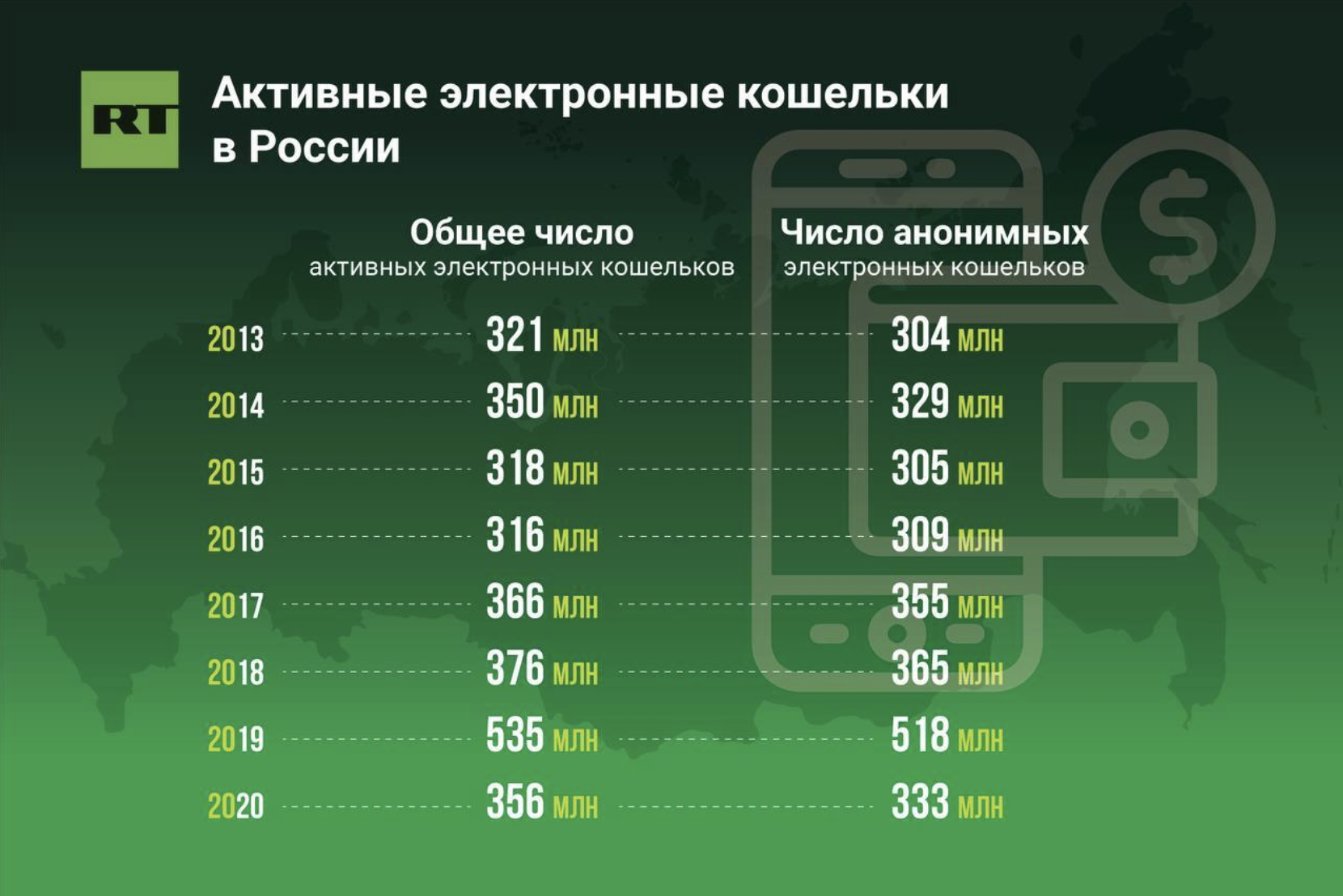Over the past seven years, the number of e-wallet transactions performed annually in Russia has increased more than fivefold.
If in 2013 the Russians conducted less than 595 million such transactions, then in 2020 the figure almost reached 3.12 billion, as evidenced by the materials of the Central Bank.
According to the Central Bank's calculations, over the past time, the total amount of payments made through Internet wallets in the country over the year has almost tripled - from 661.5 billion rubles in 2013 to 1.83 trillion in 2020.
At the same time, in 2019, the indicator was very close to 2 trillion rubles.
“Such a payment instrument increases the penetration of financial services even in remote regions of the country.
The main difference between a wallet and a bank card is that it can be instantly created from anywhere in the world where there is Internet access, and immediately used - without visiting the office and signing an agreement, ”the representatives of the YuMoney service explained to RT.
In addition, the high popularity of digital wallets among citizens is associated with the multitasking of such payment systems and the noticeable growth of the Russian e-commerce market.
Alma Obaeva, the head of the board of the non-profit partnership National Payments Council, spoke about this in an interview with RT.
According to her, e-wallets allow you to store money, pay for purchases, and transfer funds to other users without commission.
“At the same time, you can start an Internet wallet in a couple of minutes, use it for its intended purpose and send it to a“ sleeping ”state.
This is usually done by users who do not trust the online platform where they are going to buy any product and do not want to use a bank card.
Basically, this type of payment is popular among young people, ”Obaeva noted.
According to a joint study of the QIWI service and IDC, Russians most often use e-wallets to pay for mobile communications and the Internet (74%), online purchases (64%) and utility services (41%).
In addition, as the general director of the payment segment of the QIWI group, Andrey Protopopov, told RT, digital payment systems are in great demand among esports fans who want to financially support players.
“Also, e-wallets are becoming an alternative to integrated payments for business: these are not just transactions, but part of the business processes and models of retail sales of retailers,” added Protopopov.
In addition, the use of e-wallets is actively growing among individual entrepreneurs and self-employed.
Pyotr Pushkarev, chief analyst at TeleTrade, told RT about this.
“In the banking sector, confirmation of the transfer of funds for large amounts is required, and for transfer to an electronic wallet, as a rule, no separate agreement for the provision of services is needed,” the analyst explained.
Conclusion from the shadows
According to experts, a noticeable increase in the number of e-wallet users in recent years has led to the need to regulate the industry.
So, since September 15, 2019, Russia has banned the withdrawal of cash from anonymous bank cards or electronic wallets without going through the identification procedure.
Moreover, in August 2020, amendments to the law "On the National Payment System" came into force.
The changes imply a ban on cash replenishment of unidentified electronic wallets through payment terminals and offices of mobile operators.
This can only be done using a bank account.
At the same time, against the backdrop of the coronavirus pandemic, the Central Bank decided to postpone the initiative, so the innovations began to operate on April 1, 2021.
Note that it will still be possible to replenish transport and school cards, which are also anonymous electronic means of payment, in cash.
The corresponding law was signed in December by Russian President Vladimir Putin.
According to the Central Bank, there were more than 356 million active e-wallets in the country in 2020.
Of these, almost 333 million are anonymous.
Meanwhile, a significant share of Internet wallets in Russia is accounted for by transport and school cards, which are not subject to the new ban.
The head of the Association of Electronic Money and Money Transfer Market Participants Viktor Dostov told RT about this.
“In turn, the number of active electronic wallets that are used by Russians to pay for goods and services on the network is now only about 20 million. Of these, about 10 million are anonymous, and taking into account the new restrictions, the number of such wallets whose owners have not been identified , will decline, "- said Dostov.
The gradual departure from anonymity should increase the transparency of money circulation in the system.
Anastasia Uskova, director of the Fast River fintech platform, expressed this opinion in an interview with RT.
The growth of personalized wallets will make the fight against terrorism and drug trafficking more effective, she said.
“In addition, there are anonymous e-wallets, which are often used for such not entirely legal actions, such as payment on online casino sites, in online sweepstakes or on the darknet,” added Uskova.
Currently, such "gray" transactions account for no more than 10% of the total number of transactions on the market, notes Alma Obaeva.
Thus, the new restrictions will reduce the opportunities for illegal activity, but at the same time they will not interfere with the further growth of the popularity of e-wallets, experts say.
“The purchase of goods and services on the websites of online wallet partners does not imply anything illegal, which means there is no point in maintaining your anonymity when replenishing them.
In other words, the requirement to replenish an online wallet, for example, with a bank card to identify the depositor, should not become an obstacle to its use, ”Dmitry Spiridonov, CEO of CloudPayments service, said in an interview with RT.

